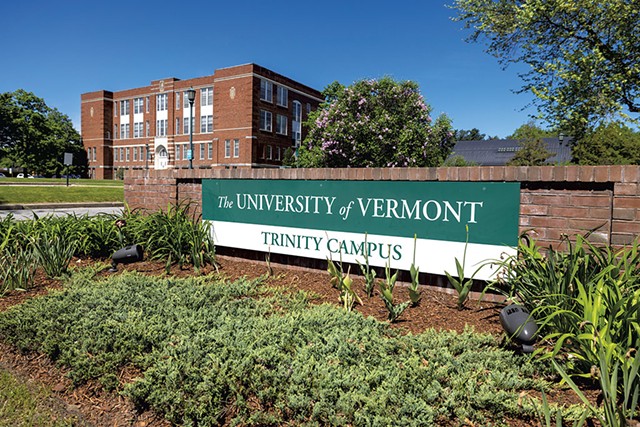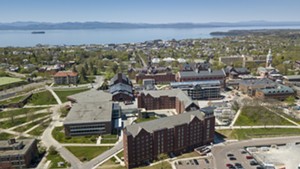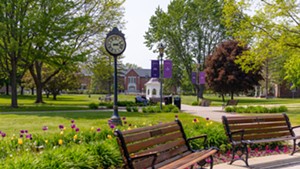
- File: James Buck
- UVM wants to build housing on its Trinity Campus.
The nose-ringed, long jorts-wearing, craft beer-drinking students at the University of Vermont might appear to be Green Mountain born and bred. But in reality, more than three-quarters of UVM students are here from out of state.
Only 18 percent of this year's first-year class is projected to be Vermonters — which is actually an increase from last year, when about 16 percent was from in-state. The numbers mark a stark decline from two decades ago, when almost 30 percent of the first-year class was from Vermont.
Overall, only 6 percent of UVM’s applicant pool is made up of Vermonters, according to Adam White, executive director of communications at UVM.
It’s not as though the school is shrinking. In fact, first-year enrollment has risen to around 3,000 students, up from about 2,640 five years ago, according to UVM data. Total undergraduate enrollment was 11,326 in fall 2022, compared to 10,513 in 2017.
The school attributes its in-state decline to statewide trends. The state’s birth rate began to drop in the 1990s, and by 2030 there will be 20 percent fewer 15- to 19-year-olds than there were in 2010, the state projects.
Birth rate trends are similar in other parts of New England. But UVM still stands out in comparison to its neighbors. In fall 2022, 61 percent of all undergraduate students at the University of Maine were in-state, while the figure was about 47 percent at the University of New Hampshire. At UVM, meanwhile, about 23 percent of all undergraduate students were from Vermont.
UVM's low numbers aren’t necessarily a problem, according to Dennis Jones, president emeritus of the National Center for Higher Education Management Systems, a nonprofit consulting organization. As of now, it doesn’t look like the school is turning away a lot of Vermonters in order to take out-of-state applicants, he noted. Instead, the university appears to be trying to offset its declining population of young people with money from out-of-state residents. As the population continues to decline, such strategies will be even more important, he said.
Related Gowntown Development: UVM Wants to Build Dorms on Its Trinity Campus. Would That Ease Burlington’s Housing Crisis?: Locked Out Series, Part 5

Vermont’s percentage of in-state students has always been somewhat lower than other states, a fact Jones credits to its original founding as a private college based on tuition money. Vermont is one of the states that appropriates the least amount of money for higher education, while it generates one of the highest amounts of tuition, according to a 2022 report from the State Higher Education Executive Officers Association, a nonprofit that reviews and consults for states on higher education spending.
In fiscal year 2023, the state gave UVM $52.5 million; the university budgeted for $776 million in operating costs.
“As long as they can do it, the state’s willing to not put a lot of money in and get the benefit of a good university on the cheap,” Jones said.
UVM has frozen tuition for five straight years, but out-of-state students pay more to attend: about $25,000 more, in tuition, fees, and room and board.
Related UVM Announces Tuition Freeze, Full Scholarships for Some Vermonters

The school has recently announced plans to build housing for students and staff, something that could appease city officials, who have complained for years about the impact students have on Burlington’s tight housing market.
UVM appears to be thriving at a time when other schools in the state have contracted or closed. Saint Michael’s College, a private Catholic school in Colchester, has seen a precipitous drop in enrollment in recent years, though the numbers have ticked up for fall 2023, a spokesperson said. Vermont State University, which recently combined several campuses and rebranded, has acknowledged that it needs more students to stay afloat.
Related Pass or Fail? Newly Branded Vermont State University Needs More Students — but Its Enrollment Is Declining














Comments
Comments are closed.
From 2014-2020, Seven Days allowed readers to comment on all stories posted on our website. While we've appreciated the suggestions and insights, right now Seven Days is prioritizing our core mission — producing high-quality, responsible local journalism — over moderating online debates between readers.
To criticize, correct or praise our reporting, please send us a letter to the editor or send us a tip. We’ll check it out and report the results.
Online comments may return when we have better tech tools for managing them. Thanks for reading.